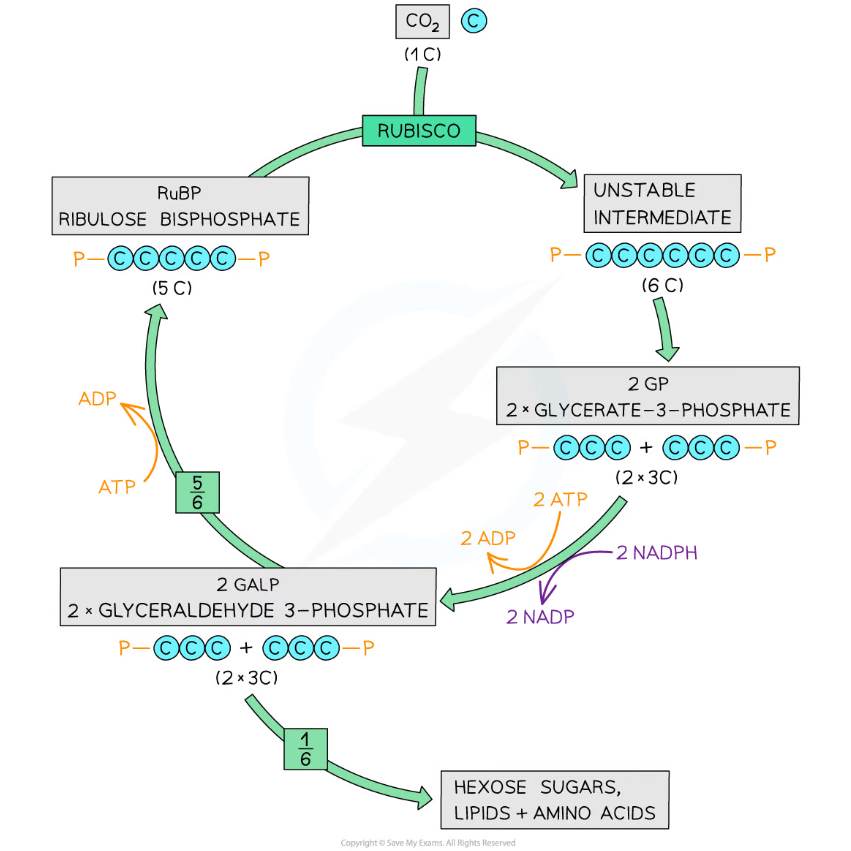- 翰林提供学术活动、国际课程、科研项目一站式留学背景提升服务!
- 400 888 0080
Edexcel A (SNAB) A Level Biology:复习笔记5.2.5 Light-independent Reactions
Light-independent Reactions
- The light-independent reactions of photosynthesis are sometimes referred to as the Calvin cycle
- The reactions produce complex organic molecules such as
- Starch for storage
- Sucrose for transport
- Cellulose for making cell walls
- The light-independent reactions do not require energy from light but do require ATP and reduced NADP from the light-dependent reactions
- There are three main steps within the light-independent reactions
- Carbon dioxide is combined with ribulose bisphosphate (RuBP), a 5-carbon (5C) compound; this yields two molecules of glycerate 3-phosphate (GP), a 3-carbon (3C) compound
- GP is reduced to glyceraldehyde 3-phosphate (GALP), another 3C compound, in a reaction involving reduced NADP and ATP
- RuBP is regenerated from GALP in reactions that use ATP
Carbon dioxide and RuBP are combined
- Carbon dioxide combines with a 5C sugar known as RuBP in a reaction catalysed by the enzyme rubisco
- The resulting 6-carbon (6C) compound is unstable and splits in two
- This results in two molecules of a 3C compound known as glycerate 3-phosphate (GP)
- The carbon dioxide has been ‘fixed’, meaning that it has been removed from the external environment and become part of a molecule inside the plant cell
Reduction of glycerate 3-phosphate
- Energy from ATP and hydrogen from reduced NADP, both produced during the light-dependent reactions, are used to reduce the two molecules of GP to two 3C molecule known as GALP
- Some of the carbons in GALP go towards the production of useful organic molecules such as glucose, while the rest remain in the Calvin cycle to allow the regeneration of RuBP
- Two molecules of GALP contain six carbon atoms, five of which are needed to regenerate RuBP; this means that for every turn through the Calvin cycle only one sixth of a molecule of glucose is produced
- Glucose is a 6-carbon molecule, so six turns of the Calvin cycle are required to produce one molecule of glucose
Regeneration of ribulose bisphosphate
- Five sixths of the GALP molecules are used to regenerate RuBP
- This process requires ATP

The Calvin cycle produces glucose and other important biological molecules.
转载自savemyexams

早鸟钜惠!翰林2025暑期班课上线

最新发布
© 2025. All Rights Reserved. 沪ICP备2023009024号-1








